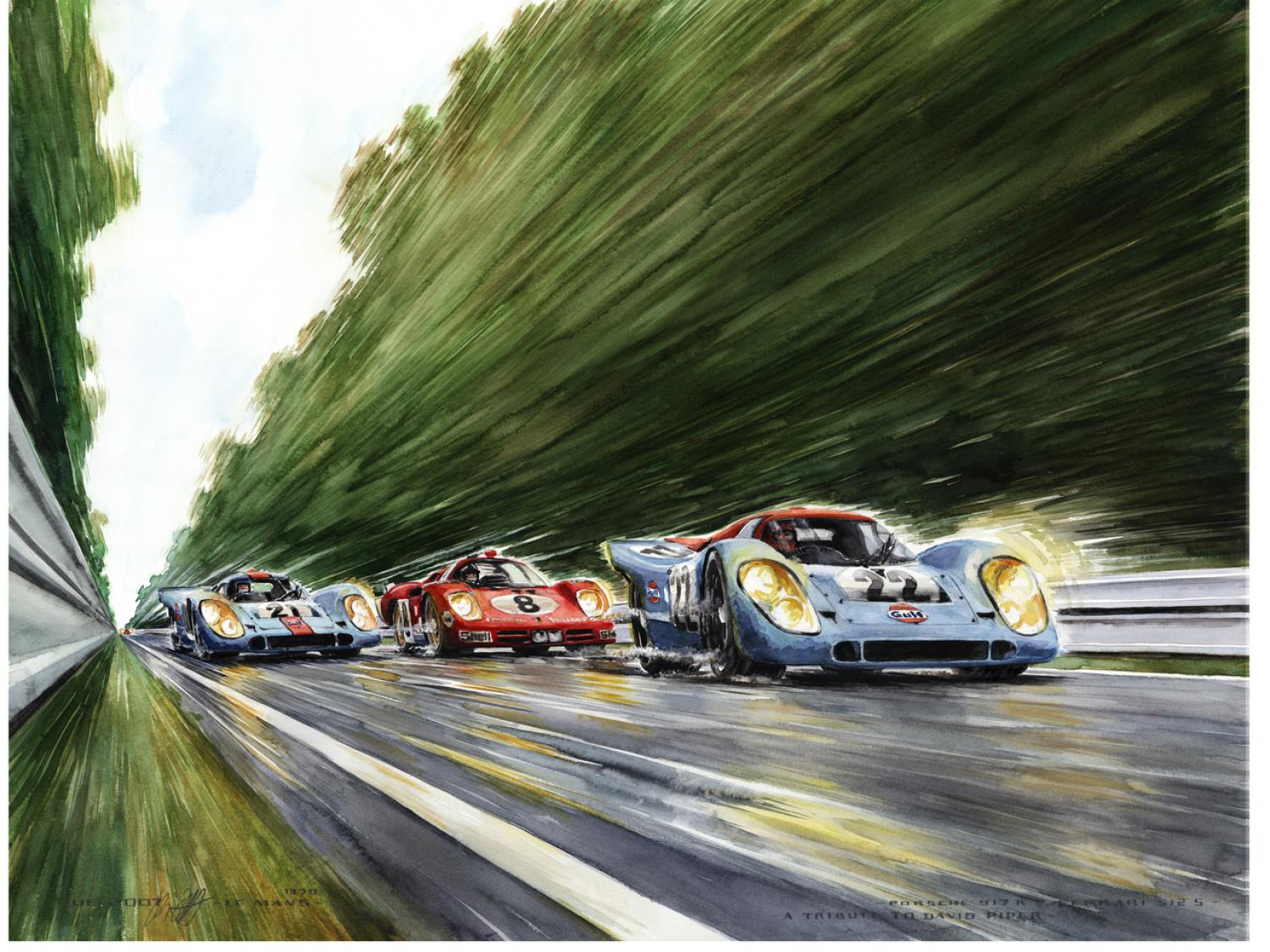24 HOURS CENTENARY – THE LE MANS EXCEPTION ⎮ The presence of art at the 24 Hours dates back to the creation of the race 100 years ago, from contemporary art posters to Art Cars.
The ties between artisitic painting and the 24 Hours of Le Mans were achieved very early. Painting is the medium through which art and the world's greatest endurance race have been brought together. Automobile Club de l’Ouest licencing coordination development manager Sandrine Weyders: "The art world melded with the race from the earliest years. It started with illustrations and paintings, particularly through official event posters."
At the time, photographing movement and speed was difficult because cameras were not yet sophisticated enough. Sketching and painting proved to be the best way to reproduce race action, with the most famous painter undoubtedly Géo Ham. The poster designer produced several official posters in the 1950s after his passion for motorsport put him behind the wheel at the 24 Hours of Le Mans in 1934! Auto painter Michel Beligond is also known for his posters in the early 1960s.
The arrival of Art Cars
These works were produced up to 1963 with photography making its debut the following year. Meanwhile, amateur painters still hold a presence at the race, focusing their attention on the cars, atmosphere, spectators, etc. Renowned artists are represented thanks to the unforgettable Art Cars, initiated by Hervé Poulain (auctioneer, contemporary art lover and gentleman driver with 10 participations in the 24 Hours). Painters like Alexander Calder, Frank Stella, Roy Lichtenstein and Andy Warhol mastefully decorated racing cars during the 1970s, as did Arman and Georges Wolinski in the 1990s.
Weyders: "We keep this artistic spirit alive through photography, sculpture, digital art and more." More traditional painting remains a vital part of the race thanks to two painters – François Bruère (Orpheograff) and Uli Erhet – under official licence (they are permitted to render the 24 Hours of Le Mans and market their products under this marque). They were granted licences because "they respect our values and know how to represent details, colours and the very essence of the 24 Hours of Le Mans," explains Weyders.
Art at the 24 Hours by licenced painters
François Bruère: "I started painting as a child and have always been fascinated by cars. Géo Ham's illustrations and auto catalogues were my sources of inspiration. I am deeply affected by the 24 Hours of Le Mans and my first memory of the race is the start in 1965 or 1966, perched on my father's shoulders. The start feeds my imagination with colours, vibrations, perspective effects and speed every single year. I've been earning a living from my art since the end of my studies! I work from photos and archives I've collected as well as testimonials, stories and encounters with drivers, mechanics and marshals. My watercolors reflect with strength and realism the car in the foreground and the sepia background reveals the atmosphere specific to each era. I hope to express through painting all the emotions I feel trackside. I have exhibited my work all over the world for nearly 40 years and I set up a gallery at the circuit during Le Mans race week. For the Centenary, I will display almost 150 original works with many new elements, retracing the greatest race hours and the most special victories."
Uli Ehret: "After completing studies in design and holding jobs in marketing and advertising, I turned to my real passions: painting and the 24 Hours of Le Mans. I've been exhibiting my works since 1998. I don't work from photos, but recreate racing scenes myself. That's what makes some of my perspectives entirely unique. If a certain scene is wanted by a client that doesn't exist in a photo, I can create it. Day, night, rain or backlight, and Arnage, Mulsanne or Tertre Rouge, not a problem! I know it all by heart after going to Le Mans for 20 years. I want to show the speed and sensations experienced by drivers and spectators when a racing car passes in my paintings. Every year, I set up an exhibit at the 24 Hours village. I'll be there again this year."
ILLUSTRATIONS (Copyright). From top to bottom: the Porsche-Ferrari duel at the 1970 24 Hours as interpreted by Uli Ehret; the race according to Géo Ham; with a livery designed by Roy Lichtenstein, the 320i (ninth in 1977) driven by Hervé Poulain and Marcel Mignot was the first BMW Art Car to make it into the classification; the use of colour by François Bruère on Jim Glickenhaus' Hypercar; a nighttime “on-board camera” imagined by Uli Ehret.





